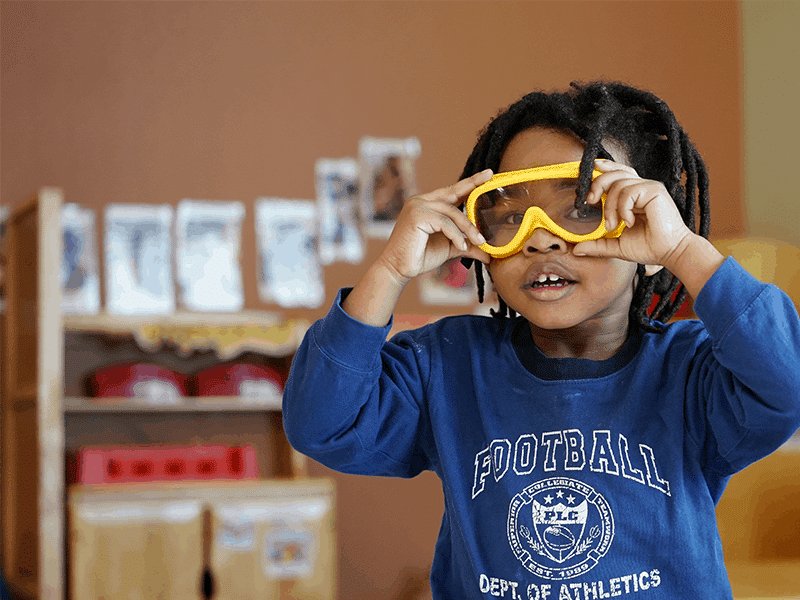Some young children are innately interested in: learning how things work, building things and taking things apart. But all children can be enticed into STEM/STEAM learning through whatever they’re already interested in. Both STEM and STEAM support play, wonder and curiosity; but STEAM includes an art component that allows children to create and design with intention. STEM and STEAM encourage children to solve problems by using inquiry and investigation.
Since young children tend to ask lots of questions, you can introduce STEM/STEAM basics by following these simple “CHIA” steps:
- Curiosity: “So glad you asked!”
- Hypothesis: “Why don’t you make a guess?”
- Investigation: “Let’s look into it!”
- Analysis: “Why do you think that happened?”
Before beginning any activity with your toddler, ask them what they think is going to happen. Then ask why they think that. They’ve just created a hypothesis and given their logic for that hypothesis—the foundation of all scientific exploration. By then creating experiments with your toddler and talking about what you observe, you’re setting them up to plan, brainstorm, build, and solve problems exactly like scientists and engineers do.
Ideas for You and Your Child:
- Build a ramp for toy cars to roll down. Have your toddler race two cars down the ramp. Ask them to predict which one will get to the bottom first. Then have them play with how to make the cars faster or slower. For example, if you put a small stone on the car, does it make it go faster? Buildable toys provide great opportunities for experimentation. What happens to the speed when your toddler makes the car bigger, heavier, or longer? This is experimentation, and it’s fun!
- When you go for a walk, you can guide the conversation, or let your child come up with their own experiments. If you see an animal, play with how softly you can talk before the animal notices you. Or ask your child why the squirrels race around the tree. Right answers are not the goal—this is about asking questions and predicting the answer.
Remember that it’s okay for both you and your child to answer “I don’t know” to any question. It’s asking the question that’s important because that is where all science begins.
STEAM At-Home Activity: Building Structures
While at home, parents can introduce building structures with their children. The materials for this activity consist of wide popsicle sticks, clear plastic drinking cups and small cube blocks. Parents can encourage their child to build a structure while engaging in conversation about how many cups will it take to build the structure. What will happen if you use fewer cups and more popsicle sticks? How high can you build? The children can learn about balance, height, measurement and a host of wonderful things. This at-home activity needs little to no planning, but a readiness to think outside of the box.
Don’t underestimate the incredible thinking skills that young children have. With just a playful shift in word choice, we can allow for a dramatic shift in getting our babies ready for a STEM/STEAM education!



